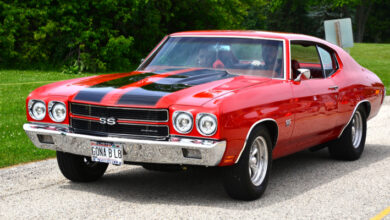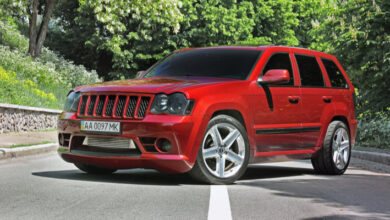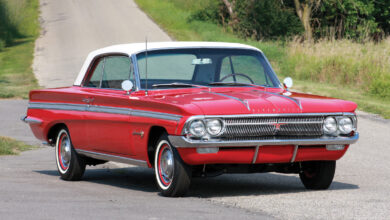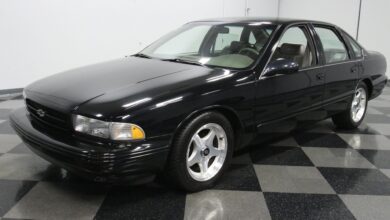Racing for Profit with the 1958 Corvette
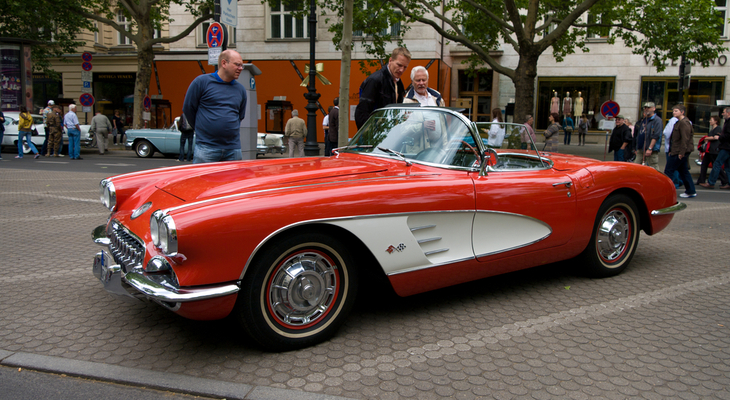
For a car facing extinction after its first generation of production, Chevrolet’s Corvette continues to stand the test of time. Today, first generation Corvettes, also known as the C1, are highly sought after by collectors and enthusiasts. The 1958 Corvette is one of the most desirable from the first generation.
Produced from 1953 to 1962, the C1 features a lightweight fiberglass body sculpted with classic American sports styling. Chevrolet constantly updates each new model year with the latest advancements and technology. They did that in 1958, they still practice it today.
In 1958, Chevy updated the Corvette with a facelift. They added louvers on the hood as well as non-functional air intake scoops on both sides of the grille. Aesthetic vents in the body coves add more stylish flair on 1958 Corvettes as well.
Chrome is a major part of automotive history, in 1958 it was the bee’s knees. Every automaker was looking for ways to flaunt chrome without going overboard. The 1958 Corvette features plenty of chrome including “suspenders” running from the rear window to the trunk lid and rear fenders.
Other notable exterior features on the 1958 Corvette include switching to four headlights wrapped in a chrome bezel. The front grille features nine chrome “teeth”, down from 13 in previous models. To add a classy finishing touch, chrome accent strips run along the top curves of the front fenders.
Chevy also increased the overall length of the Corvette by 9.2 inches while adding 2.3 inches to the width. The 1958 Corvette is 177.2 inches long and 72.8 inches wide. This bigger, more aggressive stance gave the American flagship sports car a bolder style.
Although many of these changes look nice, they also add weight to the vehicle. As a result, the 1958 Corvette is the first one to ever weigh more than 3,000 pounds. In fact, the ‘58 weighs a full 200 pounds more than the 1957 ‘Vette.
Inside the 1958 Corvette, Chevy upgraded the interior with a significantly redesigned instrument cluster. Every gauge except the clock is directly in front of the driver. Good luck resisting the urge to push the needle with the all-new 160 mile per hour speedometer staring back at you, point-blank.
Of course, GM was thinking about passengers holding on for dear life as well. When riding as a passenger in a 1958 Corvette, simply use the grab bar mounted in front of you, on the dashboard. Should the driver drop the hammer around a sharp turn, you will learn the other four letter word for this grab bar.
For the first time ever in a Corvette, seats belts became standard equipment in 1958. There are other minor updates throughout the interior, but most people want a Corvette to drive it.
Backing It up on the Track
American automakers were facing stiff competition from many European manufacturers at this time. However, on the race track, the Corvette was performing very well. This success continued for the 1958 Corvette.
Chevy now rated the 283 cubic inch Corvette V8 engine at 290 horsepower. There is a small disclaimer though, this is the output of the fuel injected versions of the 1958 Corvette.
1958 Corvettes featuring factory fuel injection also have a Duntov-cam in the engine. Putting the pedal to the metal on this engine while screaming at wide-open throttle will produce 290 horses at 6,200 rpm. It may also cause an urge to mash the gas pedal whenever possible.
Sadly, only 1,500 Corvettes featuring factory fuel injection sold in 1958. Out of those, only 1,000 of them feature the 290 horsepower setup. The remaining fuel injected stragglers have 250 horsepower.
A twin carburetor, non-fuel injection version was still available from the factory with 270 horsepower. Most 1958 Corvettes feature the base V8. This single carburetor engine produces 230 horsepower.
For those who really love driving, Chevrolet offered several race-ready configurations of the 1958 Corvette. Some of the available upgrades include positraction, metallic brakes and an improved suspension.
With a price tag of about $1500 over the base model, these upgrades enabled the 1958 Corvette to compete with some serious contenders. A reasonable entry fee to go toe-to-toe with some of the top Porsche, Ferrari or Jaguar race cars of the era.
Of course, if you purchased a Corvette with these upgrades, it included a warning on the windshield. “This car is not intended for street use” – 1958 Corvette. Many owners ignored the warning on their way off the lot.
A 4-speed manual transmission was available as a premium option. Other transmission options in 1958 Corvettes were a 3-speed manual or a Powerglide automatic. In the end, the 1958 Corvette was the first one to turn a profit for General Motors, probably saving it from obliteration.
Winning the Checkered Flag
Available as a 2-door convertible, Chevrolet produced 9,168 Corvettes in 1958. Although their desirability drives values up, you can get your hands on one for the right price.
A factory near-race-ready 1958 Corvette featuring fuel injection with all the bells and whistles is always going to fetch a premium price. If well-maintained or almost pristine, expect to pay six figures or more for one of these. It’s all about smiles per mile in a Corvette.
You will also see many customized 1958 Corvettes on the market, including some featuring modern GM LS engines swapped into vintage bodies. Custom modified models can reach asking prices of close to $300,000.
If you are seeking one of the 230 horsepower versions of the 1958 Corvette, they are a little more common. However, the car’s condition will have a large impact on the final purchase price. Clean and recently restored examples are available within the $70,000 and up price range.
You may have to be patient and do a lot of digging if you want to find a bargain on a 1958 Corvette. These are iconic cars and an important part of the Corvette’s legacy. When you roll up to a show in one of these, the experience itself is the ultimate reward.
